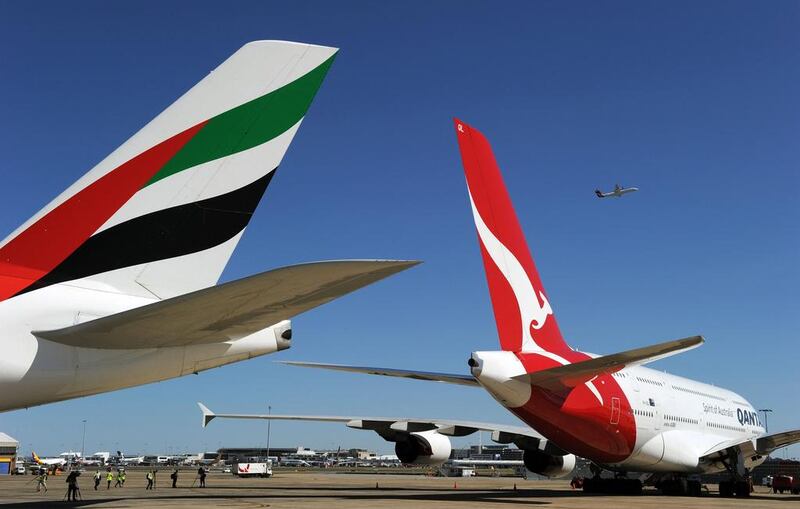Arabian Gulf airlines are crucial in helping their home countries diversify their economies and reduce their reliance on oil exports, says the International Air Transport Association (Iata).
The airlines do this through their success as aviation hubs for the global trading of goods and services.
“The success of Gulf carriers attracting long-haul connecting traffic over their hubs is also a key factor behind the expected growth [of the Gulf carriers],” said Brian Pearce, the chief economist of Iata, said:
Indeed, the Gulf carriers’ development of their long-haul networks is leading the growth of the global aviation industry, and profits are expected to rise.
“We also see strong growth in the [originating and destination passenger] business and tourism traffic as Middle East economies continue to grow strongly and develop their tourism sectors,” Mr Pearce said.
Gulf airlines' partnerships with their foreign counterparts – such as Etihad Airways' collaboration with India's Jet Airways and Serbia's Jat Airways, and Emirates Airline with Australia's Qantas – are part of a worldwide trend to drive business around the globe.
That enables greater passenger flows across airline networks, resulting in the use of larger aircraft with ensuing lower unit costs, Mr Pearce said.
“No one airline can have a sufficiently large network to offer business travellers the destinations and [flight] frequencies they demand,” Mr Pearce said.
“These tie-ups are partly because investment rules and bilateral regulations prevent cross-border mergers.”
Middle East carriers enjoyed the third-highest passenger load factor (a measure for calculating the average occupancy on various flight routes) of 78.1 per cent between January and July, trailing those of carriers in North America and Europe.
Their growth in revenue passenger kilometre – the kilometres paying passengers have flown – grew the highest gobally at 10.9 per cent during that period.
This year, the projected 11.3 per cent capacity growth of Middle East carriers will marginally outstrip projected passenger capacity growth of 10.5 per cent.
But Iata, which represents 200 airlines worldwide, does not expect that to affect Gulf airlines’ profitability.
“In 2014, we expect traffic growth to exceed capacity growth in the Middle East,” Mr Pearce said.
“Load factors are relatively high for Middle East airlines and we expect them to rise a little further in 2014 after a small decline this year.”
The expected decline in cargo and passenger traffic as Asian economies such as India and China slow is expected to be offset by stronger exports from Europe, Japan and Africa.
ssahoo@thenational.ae





